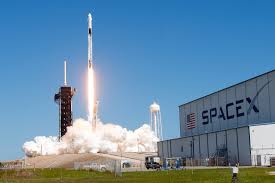SpaceX, the private aerospace manufacturer and space transportation company founded by Elon Musk in 2002, has transformed the global space industry with its innovative technologies and ambitious goals. Headquartered in Hawthorne, California, SpaceX has become a symbol of human ingenuity and determination, breaking barriers that once seemed insurmountable in the realm of space exploration.
The Origins of SpaceX
The idea behind SpaceX was born out of Elon Musk’s desire to make space travel more affordable and ultimately colonize Mars. Musk recognized that the cost of launching payloads into space was prohibitively high and that innovation in rocket technology had stagnated under government-led space programs. In response, he created SpaceX to reduce launch costs and build reusable rockets drastically.
This milestone set the stage for future successes and demonstrated that private companies could compete with government-run space agencies like NASA and Roscosmos.
Game-Changing Technologies
SpaceX has pioneered several groundbreaking technologies that have redefined space travel:
1. Reusable Rockets
Traditionally, rockets were discarded after a single use, making each launch extremely expensive. SpaceX changed that narrative with its Falcon 9 and Falcon Heavy rockets, which are capable of returning to Earth and landing vertically for refurbishment and reuse.
This reusability significantly reduces costs and allows for more frequent and reliable space launches. It also opens the door for commercial space travel, satellite deployment, and interplanetary missions.
2. Dragon Spacecraft
The Dragon capsule, another flagship product, is capable of carrying both cargo and crew to the International Space Station (ISS). In May 2020, SpaceX’s Crew Dragon became the first private spacecraft to transport astronauts to the ISS as part of NASA’s Commercial Crew Program.
3. Starship
. Starship is designed to carry up to 100 passengers and substantial amounts of cargo, making interplanetary colonization a realistic possibility. The Starship program has undergone multiple prototypes and test launches, steadily progressing toward operational capability.
Collaborations with NASA and Other Agencies
Through the Commercial Resupply Services and Commercial Crew Program, NASA has entrusted SpaceX with critical missions to the ISS. These collaborations not only validate SpaceX’s technology but also support the company financially and logistically.
In addition to NASA, SpaceX works with other international space agencies, commercial satellite companies, and even the U.S. Department of Defense. These collaborations position SpaceX as a key player in both civilian and military aerospace sectors.
Starlink: Bringing the Internet to the World
As of 2025, thousands of Starlink satellites are in orbit, providing internet coverage across multiple continents.
Starlink not only represents a significant technological feat but also has the potential to bridge the digital divide and improve global connectivity.
Space Tourism and Commercial Spaceflight
With the success of reusable rocket technology, SpaceX has also stepped into the realm of space tourism.
In the future, SpaceX aims to offer orbital flights, lunar missions, and even Mars expeditions to private individuals, making space tourism a reality for those who can afford it.
Mars Colonization: The Ultimate Goal
At the heart of SpaceX’s mission is the goal of making life multiplanetary.
Economic and Environmental Impact
SpaceX’s efforts have spurred economic growth, created thousands of jobs, and lowered the cost of satellite launches. Its competitive pricing has democratized space access, allowing startups and universities to participate in space science and technology.
However, the environmental impact of frequent rocket launches and satellite deployments has sparked concerns. Rocket emissions, debris in low Earth orbit, and light pollution from Starlink satellites are issues that SpaceX must address. The company has shown commitment to mitigating these effects by developing more efficient rockets and working with astronomers to reduce light interference.
Competition and the New Space Race
SpaceX is at the forefront of a new space race, facing competition from other private aerospace firms such as Blue Origin (founded by Jeff Bezos), Virgin Galactic (by Richard Branson), and Rocket Lab. While competition fuels innovation, SpaceX currently leads in terms of flight frequency, reliability, and technical achievements.
Governments around the world have taken note, and many have re-invested in their space programs or created partnerships with SpaceX to benefit from its rapid advancements.
The Cultural Impact of SpaceX
Beyond the technical and economic achievements, SpaceX has reignited public interest in space exploration. Millions of people tune in to livestreams of launches, booster landings, and spacecraft dockings. Elon Musk himself has become a polarizing but undeniably influential figure, often using platforms like X (formerly Twitter) to share updates, engage with fans, and outline his vision for humanity’s future in space.
Conclusion
SpaceX is not just a company; it’s a movement that is redefining what is possible in space exploration. Through bold innovation, relentless experimentation, and visionary leadership, SpaceX has turned science fiction into science fact. As we look to the future, SpaceX stands as a beacon of possibility, a testament to human potential, and a gateway to the stars.
From launching satellites to planning Mars colonies, SpaceX continues to push the limits of our capabilities. While challenges lie ahead, one thing is certain: the future of space travel has arrived, and SpaceX is leading the way.



